Maria Ana Soto had been searching for her mentally ill son Misael for nearly two months when KPBS first visited her Tijuana home. She had looked in jails, migrant shelters, and even the morgue.
“Something happened to him,” the 59-year-old mother said in Spanish.
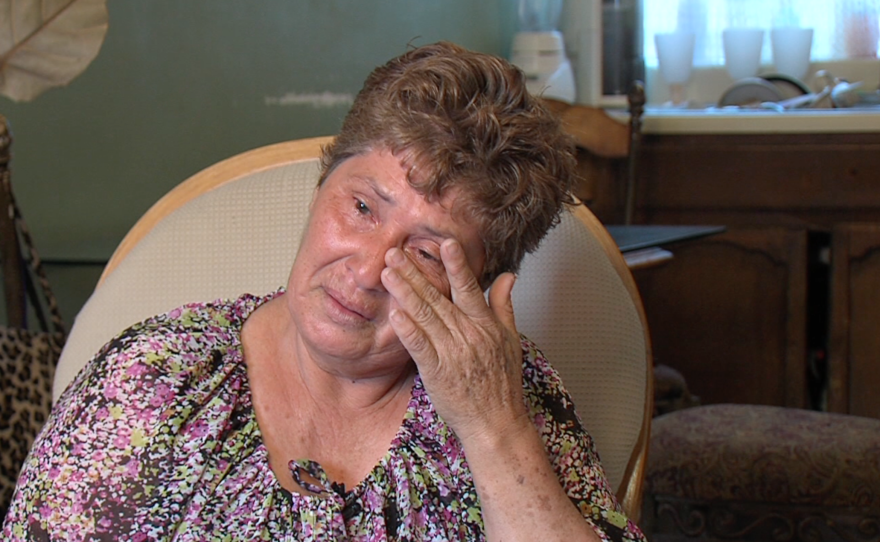
A neighbor told Soto she had seen police take Misael, 35, from the street in front of her house on March 5, the day he disappeared. It wouldn’t have been the first time the police had arrested Soto’s son.
“Because he was talking to himself. They thought he was drugged, but he just talked to himself,” Soto said. “Sometimes he would stand outside talking and I’d say, ‘Come in or the police will get you!’ And he’d say, ‘I’m not the one talking. They’re talking to me. I’m just responding.’”
Misael was suffering from auditory hallucinations and delusions. A neurologist had written a prescription for a diagnostic MRI, but Soto couldn’t afford it. This was the first time her son had disappeared for more than a couple of days. Soto had almost lost hope of finding him when she got a clue about his whereabouts.
RELATED: Tijuana Mandates Drug Treatment For Hundreds Of Homeless
The day Misael disappeared, Tijuana Mayor Jorge Astiazarán was clearing out El Bordo, a homeless encampment in the Tijuana River canal where deportees and other migrants often take shelter near the border. Some of the homeless use methamphetamine, heroin or other drugs.
During that first week of March, hundreds were shipped to drug rehabilitation centers across the city, some against their will. The unprecedented move raised questions among local human-rights groups: Were all of the relocated migrants drug addicts? Would they receive quality treatment? Who would pay for it? Was it legal?
Soto had just one question: Had her son been mistaken for a homeless migrant?
Misplacements in Tijuana’s mass relocation
She took a picture of Misael to Maria del Rosario Lozada, coordinator of Mejora, the government program overseeing the migrant rehabilitation. Lozada had good news: She had seen Misael at a rehabilitation center.
Soto wrote down the address. She has no car and vehicle; she travels everywhere by foot or public transit. About four hours later, she arrived at DARE A.C. in Colonia Cortez, on the outskirts of Tijuana.
“But it was empty. There were no patients,” Soto said.
She called Lozada repeatedly and left several messages. She said Lozada called her back days later with a second address in Colonia Unión, another Tijuana neighborhood. She found patients at the center, called Drogadictos y Alchólicos en Recuperación con Esperanza, but not her son.
“When I realized he wasn’t there, I thought, these are all lies,” she said through tears.
Soto decided to visit Lozada in person again. She got a third address. This time, it was the right one. After nearly two months of searching, Soto found her son at a rehabilitation center called DAR in Colonia Magisterial near the Otay Mesa border crossing.
“I was painting a house, and when I was going home the cops bring me here,” said Misael, in an interview with KPBS. “I don’t know. They think I was a drug addict, and they bring me here for no reason."
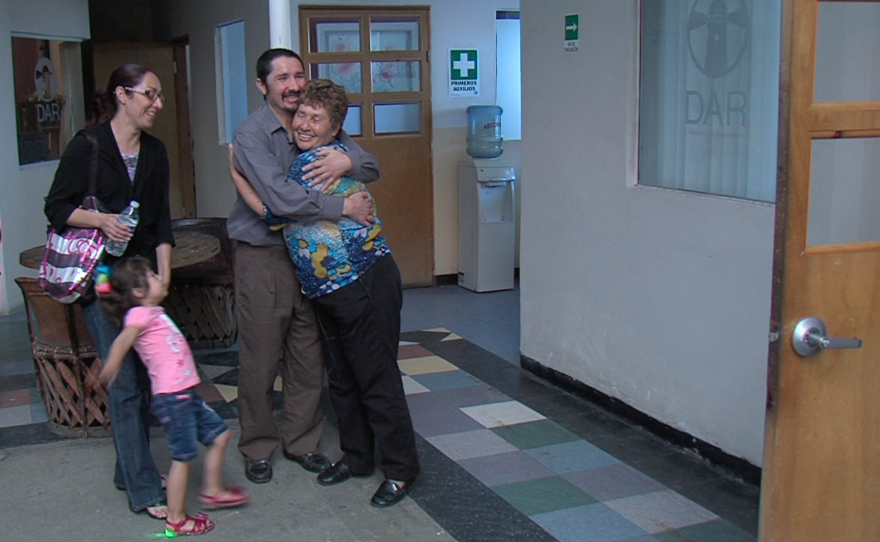
Neither Lozada nor the mayor’s office responded to repeated requests for comment on a pattern of irregularities that KPBS found in the migrant rehabilitation process, such as misplaced individuals and funding problems.
For a previous KPBS story, the mayor’s office provided a list of rehabilitation centers in response to inquiries about where migrants from El Bordo were placed. DAR was not on that list.
Quality of the treatment
When KPBS visited DAR in early May, the rehabilitation center was housing 61 recovering addicts, manager Manuel Romero said. Fourteen of them had been dropped off from the sweep of the El Bordo encampment, he said.

Like most residential rehabilitation centers in Tijuana, DAR operates under the model of “ayuda mutua,” or mutual help. That means residents are sent out to work and collect donations. Treatment rarely involves mental health professionals or medicine for weaning people off of drugs safely. The centers emphasize abstinence with 10-step programs and meetings in the style of Alcoholics Anonymous.
“I don’t have no pills for people for the withdrawals, none of that,” Romero said. “I like them to live it. So they value it more.”
A 2014 report from Mexico’s nonprofit Collective For Integral Drug Policy found widespread use of chains, ropes and other tools to restrict the mobility of addicts suffering from drug withdrawals in these centers. The study said reports of beatings and other forms of torture were commonplace.
When people first arrive at DAR, they’re kept in a small room behind a padlocked door, Romero said. The center has several security guards “to make sure everybody behaves,” he said.
Some of the residents at DAR were bruised and wounded, with bandaged hands or feet. Romero said addicts often come into the center with injuries due to a tough life on the street. Questioned residents said they had not been beaten at DAR and were being treated well by staff members.
Soto’s son, Misael, said he tried to escape from DAR while taking out the trash. Security guards chased him down and brought him back to the center. He said nobody hurt him.
Legal questions arise from sweep
The Mexican policy governing drug rehabilitation, known as Norma 028, says rehabilitation must be “strictly voluntary.” Darinka Carballo, a Mexican lawyer and director of the nonprofit Fundación Gaia, said the relocation of the El Bordo migrants was technically against the law.
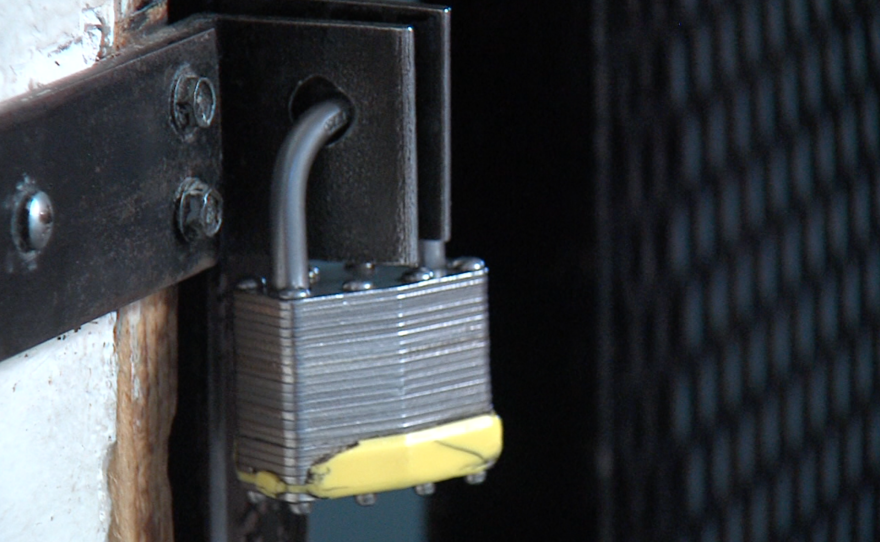
“These centers deprive people of their freedom under the banner of medical treatment,” Carballo said. Her nonprofit has provided health care, food and other services to the El Bordo migrants since 2013.
Carballo said some of these rehabilitation centers lack signed consent forms. She said she doesn’t think rehabilitation was the right answer for all of the migrants.
“Not everyone who lived in El Bordo used drugs,” she said.
She said she filed the Mexican equivalent of a U.S. Freedom of Information Act request for information on how the government decided which El Bordo migrants belonged in rehabilitation and did not receive a response.
“I don’t have any documentary evidence that ascertains that people were diagnosed, that they have a file or a competent medical doctor or psychiatrist following up with them,” she said.
Some migrants missing
The government did send Carballo a list of rehabilitation centers that received El Bordo migrants. Those centers have about 700 residents, including non-migrants who came alone or at the request of relatives, she said. Lozada of the government program Mejora told KPBS that more than 1,000 El Bordo migrants were relocated to rehabilitation centers through March. That leaves at least 300 missing.
Carballo said she has not been able to find all of the El Bordo migrants her nonprofit worked with.
“Now the question is: Where are they?” she said. “Are they really OK? And are they really being attended by the people trained to do so?”
She said she thinks the government was more concerned with removing the migrants from public sight than with helping them. Tijuana’s mayor, Astiazarán, had said the removal was motivated by a storm that was causing life-threatening floods.
Carballo said, “It was the perfect excuse to move these people from that space because they’re a bad image for the city.”
Officials have said the presence of the homeless migrants was hurting tourism and other border business. Not all of the people removed were taken from the canal. Others were picked up off the street or from in front of migrant shelters.
Some migrants told KPBS they never made it to rehab. Mario Lopez, a deportee who lived in the U.S. for 40 years, said he was sleeping in the canal when the police surrounded him and about 60 other migrants. They were placed in handcuffs, herded into several police vans and told they were going to drug rehabilitation centers, he said.
“They just went and dropped us in the middle of nowhere,” Lopez said.

The “middle of nowhere” was an empty lot in the agricultural valley of San Quintin, about 200 miles south of Tijuana, he said. The valley had a shortage of laborers because of a farmworker strike. Lopez said he found work and paid for a ride back to Tijuana. But he’s worried about what happened to his friends.
“A lot of these guys, they were looking real bad,” he said.
The Tijuana mayor's office did not respond to repeated requests for comment on Lopez's claims.
‘A shared binational responsibility’
Ayuda mutua centers arose in response to the lack of public treatment options for Mexico’s rising drug addiction problem, according to the Collective For Integral Drug Policy. Mexico had only 43 public residential rehabilitation centers nationwide in 2013, said a survey by Mexico’s National Center for the Prevention and Control of Addictions.
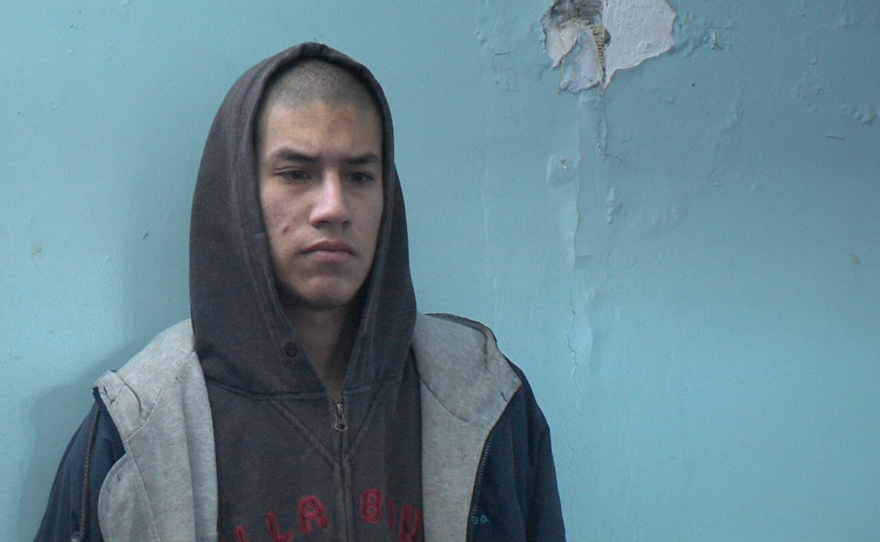
In Tijuana, this lack of options is most acute. The city has the highest rate of drug use in Mexico, according to government data. One in every five residents reports lifetime use. El Bordo, where migrants could be seen shooting up, was the most visible manifestation of the problem.
Record deportations contributed to the surge in addictions, according to mental health experts. The U.S. has deported more than 2 million migrants to Mexico since President Barack Obama took office in 2009, with a focus on foreign nationals who commit crimes. Deportees in Tijuana report turning to drugs after being separated from their families in the U.S. In a survey by Mexico’s border research institute El Colegio de la Frontera Norte, only about a third of deportees said they were already using drugs north of the border.
Steffanie Strathdee, director of the Global Health Initiative at UC San Diego, said she doesn’t believe Tijuana should receive the sole blame for its drug addiction crisis.
“We, as Americans, have a shared binational responsibility to help the people that we are literally dumping in the Tijuana River canal,” she said.
Strathdee recommends following up with the migrants. Because so many are deportees, most of them lack official identification and a social support system to protect them from human rights abuses.
A study she co-authored in 2010, published in the International Journal of Drug Policy, looked at drug treatment experiences among drug users in Tijuana. Of surveyed participants, 72 percent reported having suffered physical abuse at the centers.
Rehabilitation centers along the Mexican border have also been linked with organized crime. Mexican law enforcement officials told the Associated Press in 2010 that drug cartels often use the centers to recruit recovering addicts for the trade. Dozens of people have been killed in trafficking-related shootings at rehabilitation centers in both Tijuana and Ciudad Juarez since 2008.
Paying for rehabilitation
In March, Lozada of the government’s Mejora told KPBS that the government would spend the equivalent of about $100 per day for each patient placed in rehabilitation to cover the cost of thorough residential, medical and mental health services. She said the city had come to an agreement with Mexico President Enrique Peña Nieto because some of the money would come from the federal government. Patients would be kept in treatment for up to six months.

Four months after the relocation, however, all of the centers that responded to requests for comment from KPBS said they had yet to see any or most of that money.
Romero of DAR said the city government promised the center money for taking in the El Bordo migrants but has yet to send it.
“Nobody’s helping us. That’s why we go out and work, to keep the place running,” Romero said.
The center collects about $30 a week from residents who are sent out to clean streets, bag groceries and do other tasks, he said.
Perla Savala, legal representative of a women’s rehabilitation center called Maravilloso Corazón, said the center received 20 women from the sweep of El Bordo. But she said the government has not sent the promised funding. “We don’t know if (the government) is going to give us any help,” she said, adding that the center was collecting donations of food and clothing from the community.
Jose Ramon Arriola, president of a rehabilitation center called El Cirad, said he received 88 El Bordo migrants during the evacuation. In the first three months, the government sent the equivalent of about $27,000. That’s just over $3 a day per patient. He said the center is still receiving addicts the police are picking up off the street.
Fernando Rodriguez, director of the rehabilitation center Fountain of Hope, said the center received 23 people from El Bordo, but no funding yet.
Lack of government oversight
Scarce oversight of Mexico’s rehabilitation centers has led to widespread non-compliance with Norma 028, the National Policy for the Prevention, Treatment and Control of Addictions, said Carlos Zamudio, director of the Collective For Integral Drug Policy.
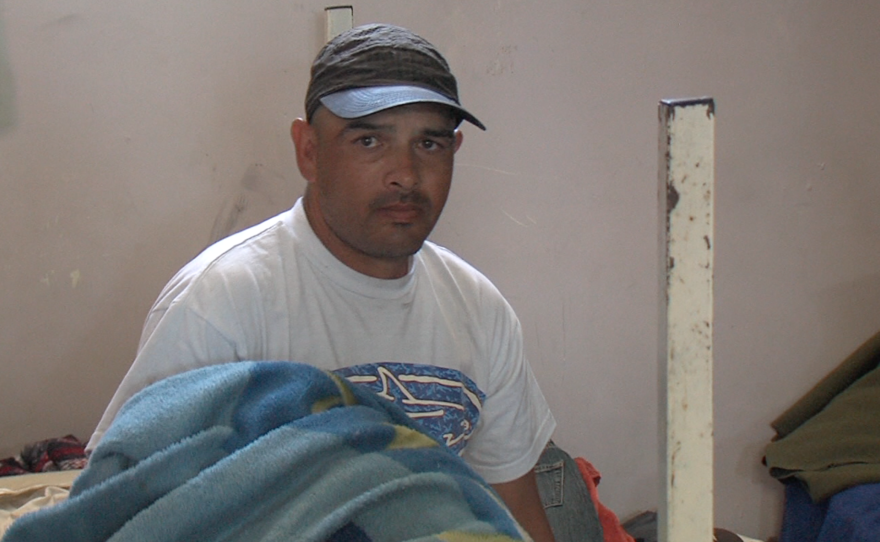
Zamudio said part of the problem is a lack of coordination among authorities with the responsibility to hold even registered centers accountable.
In Tijuana, the city’s Anti-Addiction Institute is in charge of ensuring compliance with the law. The Baja California Anti-Addiction Council at the state level also has the obligation. At the federal level, Mexico’s National Center for the Prevention and Control of Addictions, is supposed to be following up as well.
Yet according to the Collective For Integral Drug Policy, only one in every four rehabilitation centers meets the requirements of Norma 028, such as signed consent forms, access to professional medical attention, and opportunities to communicate with families.
Soto’s son, Misael, said DAR’s manager Romero offered to contact his family. But the number Misael gave for his mother wasn’t working, Romero said.
Better off at DAR than anywhere else
DAR was among the few rehabilitation centers that opened its doors to KPBS. It has a gym, a large meeting hall, a cafeteria, dozens of beds and even some turtles in a courtyard fountain.
Residents at DAR said they gave Misael the nickname “Pajarito,” or Birdie, because he talks to himself.
“I’m an aeronautic engineer,” Misael said. “I have private jets with touchscreen technology I created, so they call me Pajarito. I also have spacecrafts, two in Iran and one in China.”
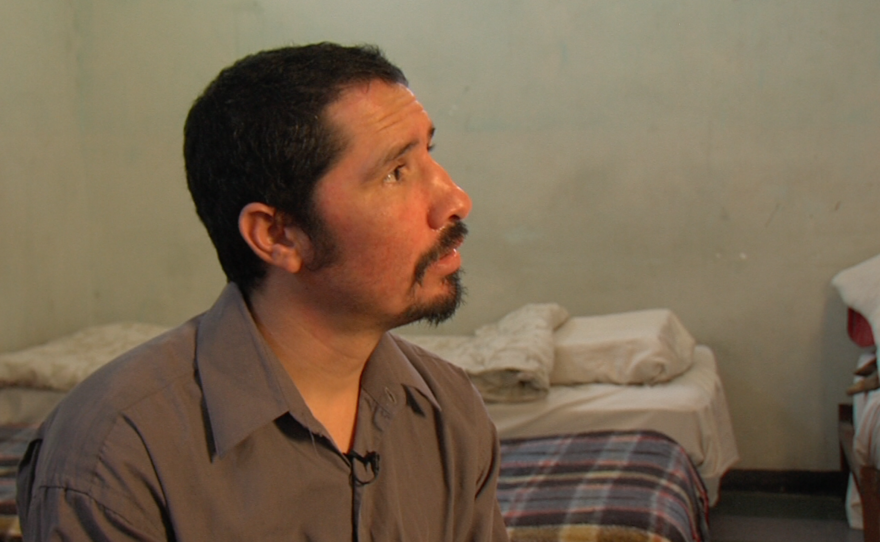
It’s not unusual for rehabilitation centers in Mexico to take in people with mental illness. They’re often cheaper than psychiatric facilities.
Romero said DAR has experience treating people with problems like Misael’s. While giving KPBS a tour of the facility, he pointed out several other patients he called “special.”
“He’s another special case. We got a few of those,” he said.
After touring DAR, Soto said she no longer has hard feelings against the city for taking her son. The center looks nice in her view.
“I found him, I’ve forgotten everything else,” she said. “The good thing is I found him.”
After giving it some thought, Soto decided to leave Misael at DAR while raising money to pay for a neurologist to examine him. Soto sees him on weekends and donates money to the center for his food and other essentials.
“He’s safe here, not in the street,” Soto said of her son.
She said she fears that if she brings Misael home, the police might take him again.
This report is part of KPBS' Fronteras Project, a regional news collaborative that produces reports on the changing culture and demographics of the American West and Southwest. Fronteras reporting is made possible by a grant from the Corporation for Public Broadcasting.






